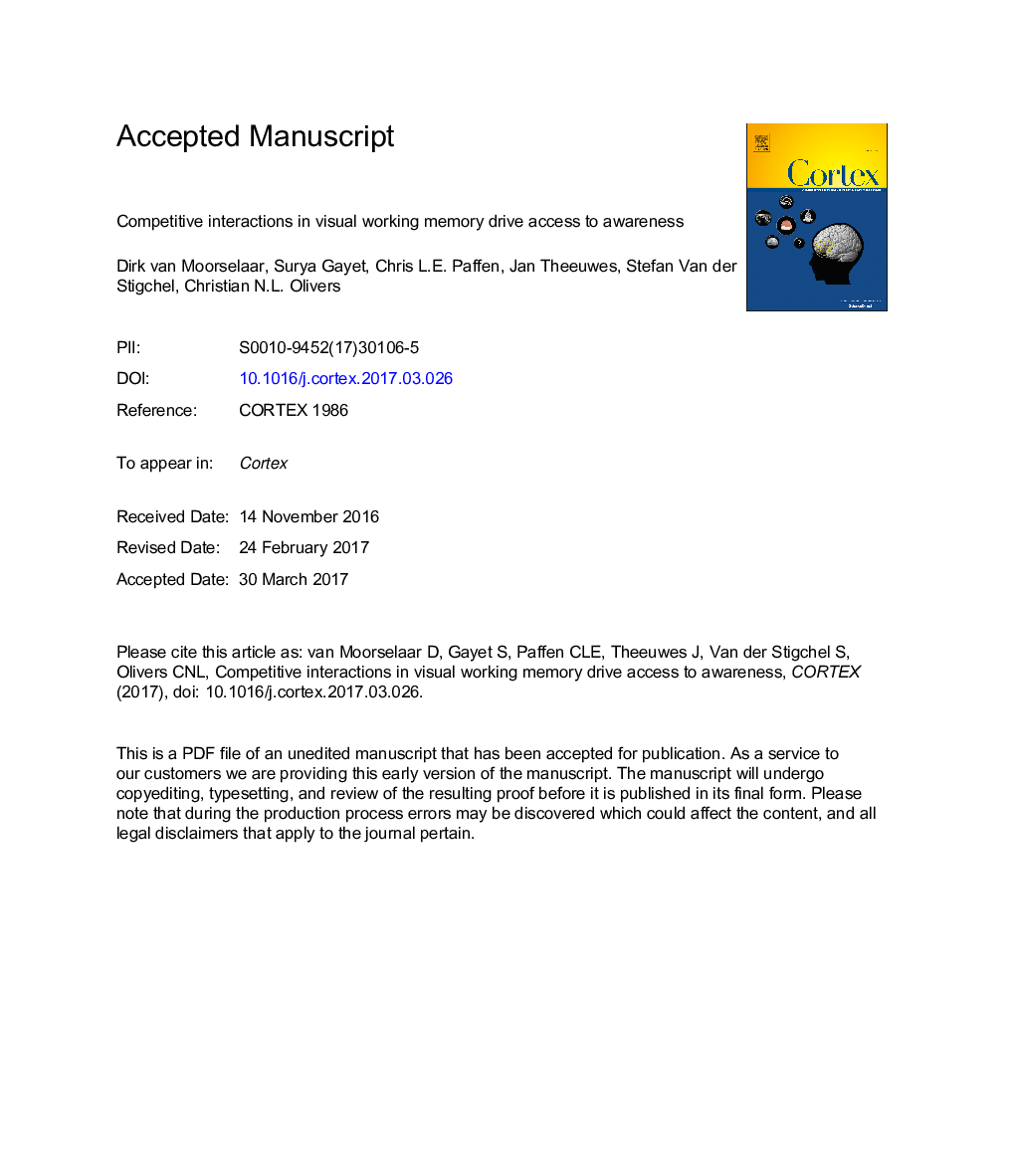| Article ID | Journal | Published Year | Pages | File Type |
|---|---|---|---|---|
| 7311544 | Cortex | 2018 | 22 Pages |
Abstract
Models of biased competition assume that pre-activating a visual representation in visual working memory (VWM) biases perception towards memory-matching objects. Consistent with this, it has been shown that targets suppressed by interocular competition gain prioritized access to awareness when they match VWM content. Thus far, these VWM biases during interocular suppression have been investigated with minimal levels of competition, as there was always only one target stimulus and observers only held a single item in VWM. In the current study we investigated how VWM-based modulation of access to awareness is influenced by a) multiple-item competition within the stimulus display and b) multiple-item competition within VWM. Using the method of breaking continuous flash suppression (b-CFS), we replicated the finding that information matching the content of VWM is released from interocular suppression faster than non-matching information. This VWM-based facilitation was significantly reduced, though still present, when VWM load increased from one to two items, demonstrating a clear competitive constraint on the top-down modulation by VWM. Furthermore, we manipulated inter-stimulus competition by varying the presence of distractors. When distractors were present, VWM-based facilitation was no longer specific to interocular suppression, but also occurred for monocular displays. The results demonstrate that VWM-based visual biases occur in response to competition, whether between or within the eyes, and reconcile findings from different paradigms.
Related Topics
Life Sciences
Neuroscience
Behavioral Neuroscience
Authors
Dirk van Moorselaar, Surya Gayet, Chris L.E. Paffen, Jan Theeuwes, Stefan Van der Stigchel, Christian N.L. Olivers,
